Uncategorized Saturday, 2025/08/23
In the second half of 2025, several pivotal clinical research results are set to be announced, which may redefine treatment paradigms: from Eli Lilly's GLP-1 small molecule orforglipron, potentially reshaping the oral weight loss market, to Sanofi's immune up-and-comer amlitelimab, taking up the baton from Dupixent; from Akeso's challenge to PD-1 giant Keytruda's OS finale, to Roche's efforts to overcome BTK inhibitor challenges in multiple sclerosis research...
These studies not only pertain to the rise and fall of major pharmaceutical companies' pipelines, stirring market expectations for next-generation blockbuster drugs, but may also bring breakthrough advancements in the treatment of major diseases such as obesity, autoimmune diseases, cancer, rare diseases, and depression. The following text will focus on nine major clinical studies worth paying attention to in the second half of 2025, examining how they define the next wave of medical innovation through the interplay of technological breakthroughs and clinical needs.
Company: Eli Lilly
Study: Phase III Attain-1
Drug: GLP-1R small molecule agonist orforglipron
Indication: Obesity
| Cat.No. # | Product Name | Source (Host) | Species | Tag | Protein Length | Price |
|---|---|---|---|---|---|---|
| GLP1R-4643H |
Recombinant Human GLP1R protein, His&Myc-tagged
|
HEK293 | Human | His&Myc | 24-145aa |
|
| GLP1R-584H |
Recombinant Human GLP1R protein, mFc-tagged
|
HEK293 | Human | mFc | Arg24-Glu139 |
|
| GLP1R-01D |
Recombinant Dog GLP1R Protein, His-tagged

|
HEK293 | Dog | His |
For Eli Lilly, after tirzepatide, the next major weight loss drug contender is undoubtedly orforglipron. As the world's first oral small molecule incretin drug likely to be approved, its chemically synthesized nature offers mass production advantages, making this field a global research and development focal point.
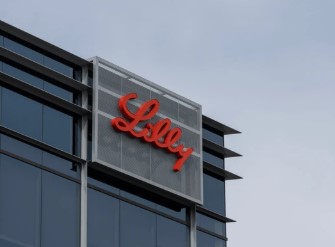
In April 2025, Eli Lilly announced Phase III clinical trial results for orforglipron in diabetic patients: within just a 40-week observation period, patients in the high-dose group lost an average of 7.3 kg, representing a 7.9% reduction. This positive data directly boosted Eli Lilly's market value by about $100 billion. Considering the weight loss in diabetic patients is generally less than in non-diabetic populations, the industry expects the efficacy in upcoming longer-term obesity indication studies to further improve.
However, it's worth noting that detailed data published in June in the New England Journal of Medicine on its diabetes research showed "persistent and frequent" serious gastrointestinal side effects, which have become a focal point for market scrutiny.
Company: Sanofi
Study: Phase III Coast-1, Shore
Drug: OX40L monoclonal antibody amlitelimab
Indication: Atopic dermatitis
| Cat.No. # | Product Name | Source (Host) | Species | Tag | Protein Length | Price |
|---|---|---|---|---|---|---|
| Tnfsf4-21M |
Active Recombinant Mouse Tnfsf4 protein, His-tagged
|
HEK293 | Mouse | His | Gln49-Leu198 | |
| TNFSF4-272H |
Active Recombinant Human TNFSF4, His-tagged
|
HEK293 | Human | His | 51-183 a.a. | |
| Tnfsf4-20M | Recombinant Mouse Tnfsf4 protein, Fc-tagged | HEK293 | Mouse | Fc | Gln49-Leu198 | |
| TNFSF4-490H | Recombinant Human TNFSF4 protein, Fc-tagged | HEK293 | Human | Fc | Gln51-Leu183 | |
| TNFSF4-344H | Active Recombinant Human TNFSF4 protein, mFc-tagged | HEK293 | Human | mFc | Gln 51 - Leu 183 |
After the success of Dupixent, a blockbuster autoimmune product, Sanofi places its hopes on amlitelimab as a potential successor. Acquired in 2021 by Sanofi, this drug's mechanism of action differs from Dupixent: it targets the OX40L molecule, inhibiting the T cell-driven inflammatory amplification in various inflammatory diseases.
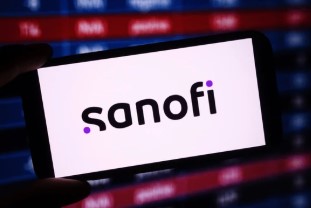
With this unique mechanism and broad indication potential (including atopic dermatitis, asthma, hidradenitis suppurativa, etc.), Sanofi believes amlitelimab has the potential to rival Dupixent, with projected annual sales peaking at over €5 billion.
Analysts' confidence largely stems from its unique positioning in atopic dermatitis: amlitelimab is poised to be an effective choice for patients unresponsive to Dupixent. Sanofi CEO Paul Hudson emphasized the potential for complementary growth between the two until Dupixent's patent expires.
Results from the Phase III Coast-1 and Shore studies will be critical evidence for amlitelimab’s future market approval.
Company: Akeso/Summit
Study: Phase III Harmoni-2
Drug: PD-1/VEGF bispecific antibody ivonescimab
Indication: Non-small cell lung cancer
Developed jointly by Akeso and Summit, the PD-1/VEGF bispecific drug ivonescimab drew attention last year by outperforming Merck's Keytruda on the PFS endpoint of the Phase III Harmoni-2 study, though its OS data remain immature. As a leader among PD-1/VEGF bispecifics, ivonescimab carries high expectations, with multiple pharmaceutical giants heavily investing in this field.
| Cat.No. # | Product Name | Source (Host) | Species | Tag | Protein Length | Price |
|---|---|---|---|---|---|---|
| PDCD1-172H |
Active Recombinant Human PDCD1, no tag
|
HEK293 | Human | Non | Leu 25 - Leu 288 | |
| PDCD1-191HF |
Active Recombinant Human PDCD1 Protein, Fc-tagged, FITC conjugated
|
CHO | Human | Fc | 379 | |
| PDCD1-5223C |
Recombinant Cynomolgus PDCD1 protein, His-tagged

|
HEK293 | Cynomolgus | His | 143 | |
| PDCD1-1589H | Recombinant Human PDCD1, GST-tagged | E.coli | Human | GST | 1-288aa | |
| Pdcd1-160M | Active Recombinant Mouse Pdcd1 protein(Met1-Gln167), hFc-tagged | HEK293 | Mouse | Fc | Met1-Gln167 | |
| PDCD1-257H | Recombinant Human PDCD1, His-tagged, Biotinylated | HEK293 | Human | His | 21-167 a.a. | |
| VEGFA-210H |
Active Recombinant Human VEGFA
|
Insect Cells | Human | Non | Met1-Arg209 | |
| Vegfa-475M |
Active Recombinant Mouse Vegfa protein(Met1-Arg190)
|
Insect Cells | Mouse | Non | Met1-Arg190 | |
| VEGFA-210HAF647 |
Active Recombinant Human VEGFA Protein, None-tagged, Alexa Fluor 647 conjugated
|
Insect Cells | Human | Non | Met1-Arg209 |
In April this year, based on Harmoni-2 results, the drug was first approved in China for first-line treatment of non-small cell lung cancer. The final analysis of the Harmoni-2 study is expected by the end of 2025, with the potential OS benefits being the "final answer" to determine the outlook for PD-1/VEGF drugs and reshape market expectations.
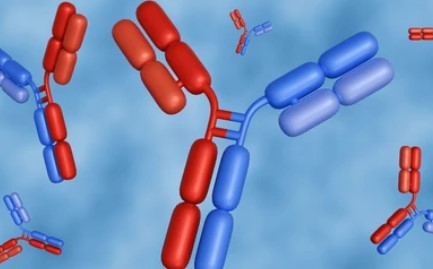
Company: Roche
Study: Phase III FENhance 1/2, FENtrepid
Drug: BTK C481S inhibitor fenebrutinib
Indication: Multiple sclerosis
Roche's fenebrutinib, as a next-generation BTK inhibitor, boasts the key advantage of penetrating the blood-brain barrier, showing promise for treating multiple sclerosis (MS). Wall Street analysts also view it as a potential blockbuster. Previously, several BTK inhibitors failed in studies on relapsing MS, and potential liver injury risks have slowed development across BTK inhibitors. Additionally, with effective relapsing MS therapies already available, there is skepticism about fenebrutinib.
| Cat.No. # | Product Name | Source (Host) | Species | Tag | Protein Length | Price |
|---|---|---|---|---|---|---|
| BTK-1966H | Recombinant Human BTK protein, His-GST-tagged | E.coli | Human | GST&His | lle443~Ser659 | |
| BTK-398HAF488 | Recombinant Human BTK Protein, His-tagged, Alexa Fluor 488 conjugated | Insect Cells | Human | His | 670 | |
| BTK-398HAF555 | Recombinant Human BTK Protein, His-tagged, Alexa Fluor 555 conjugated | Insect Cells | Human | His | 670 | |
| BTK-398HAF647 | Recombinant Human BTK Protein, His-tagged, Alexa Fluor 647 conjugated | Insect Cells | Human | His | 670 | |
| BTK-398HF | Recombinant Human BTK Protein, His-tagged, FITC conjugated | Insect Cells | Human | His | 670 |
However, Roche remains optimistic, highlighting the "reversible" nature of fenebrutinib's target binding. Preclinical data indicate it is "more potent and selective," and it has advanced to Phase III. Results from the FENhance 1/2 studies on relapsing MS and the FENtrepid study on primary progressive MS are expected by the end of the year.
Company: Moonlake Immunotherapeutics
Study: Phase III Vela-1, Vela-2
Drug: IL17A/IL-17F/albumin tri-specific antibody sonelokimab
Indication: Hidradenitis suppurativa
Hidradenitis suppurativa is a chronic inflammatory skin disease characterized by painful abscesses and scar tissue formation, with long-standing issues in diagnosis and treatment. Moonlake's Phase III research could change this outlook—the core candidate, sonelokimab, is a novel tri-specific nanobody targeting two inflammatory cytokines and albumin associated with this disease. Its unique mechanism and small molecular weight could offer superior efficacy and reduced dosing frequency compared to existing biologics like AbbVie's Humira, UCB's Bimzelx, and Novartis' Cosentyx.
| Cat.No. # | Product Name | Source (Host) | Species | Tag | Protein Length | Price |
|---|---|---|---|---|---|---|
| IL17A-14153H | Recombinant Human IL17A, GST-tagged | E.coli | Human | GST | 1-155a.a. | |
| IL17A-26H | Recombinant Human Interleukin-17 | E.coli | Human | Non | ||
| Il17a-71M | Recombinant Mouse Interleukin 17A | E.coli | Mouse | Non | ||
| IL17A-12C | Active Recombinant Canine interleukin 17A protein, His tagged | HEK293 | Canine | His | 29-155 aa | |
| Il17a-01M |
Active Recombinant Mouse Il17a Protein, His-Tagged

|
E.coli | Mouse | His |
|
|
| IL17F-377H |
Recombinant Human IL17F protein, His-tagged
|
HEK293 | Human | His | Arg31-Gln163 | |
| IL17F-14156H | Recombinant Human IL17F, His-tagged | E.coli | Human | His | 1-163a.a. | |
| IL17F-4332H | Recombinant Human IL17F Protein | Yeast | Human | Non | 134aa |
Analysts are generally optimistic about its potential, stating sonelokimab is "very likely to become a blockbuster drug." Reports also indicate that Moonlake rejected a takeover offer from Merck exceeding $3 billion, indicating interest from industry giants. The results of the Vela-1 and Vela-2 Phase III studies will be key to validating sonelokimab’s market competitiveness.
Company: Amgen
Study: Phase III Vesalius-CV
Drug: PCSK9 inhibitor evolocumab
Indication: Cardiovascular diseases
Amgen's evolocumab is the world’s first approved PCSK9 inhibitor. These injectable drugs significantly lower cholesterol in heart disease patients and were once seen as major breakthroughs in cardiovascular disease treatment. Evolocumab is currently used as a "secondary prevention" therapy for high-risk individuals who have experienced a heart attack or stroke.
| Cat.No. # | Product Name | Source (Host) | Species | Tag | Protein Length | Price |
|---|---|---|---|---|---|---|
| Pcsk9-663M |
Recombinant Mouse Pcsk9 protein, His-tagged

|
HEK293 | Mouse | His | Gln35-Gln694 | |
| PCSK9-311R | Active Recombinant Rhesus macaque PCSK9 protein, His-tagged | HEK293 | Rhesus macaque | His | Gln 31 - Gln 692 | |
| Pcsk9-915R | Active Recombinant Rat Pcsk9 protein, His-tagged | HEK293 | Rat | His | Gln 31 - Gln 691 |
Key to watch is this year's upcoming Vesalius-CV study results, which will validate evolocumab’s effect as a "primary prevention" therapy. Analysts note that positive results will drive long-term growth (until patent expiration) due to the unmet cholesterol targets in tens of millions of patients worldwide and low market penetration rates.
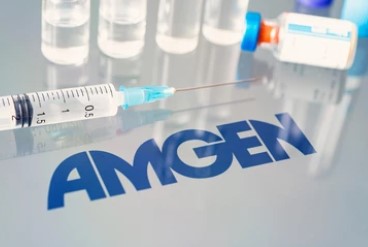
Despite the success of Merck’s oral PCSK9 drug in late-stage studies, analysts believe it will expand the PCSK9 market rather than challenge evolocumab, given limited usage rates. Amgen also states there is sufficient competitive space.
Company: Valneva/Pfizer
Study: Phase III Valor
Drug: Vaccine VLA15
Indication: Lyme disease
Lyme disease is a zoonotic, vector-borne infectious disease transmitted by tick bites, caused by Borrelia burgdorferi infection. Early treatment with antibiotics is possible, but delays may lead to long-term complications like joint pain and cardiac inflammation, or persistent "post-treatment Lyme disease syndrome," causing brain fog and fatigue. Currently, there are no preventive measures for Lyme disease, and the only approved vaccine, Lymerix, was withdrawn in 2002. VLA15, co-developed by Valneva and Pfizer, is the only vaccine in late-stage development.
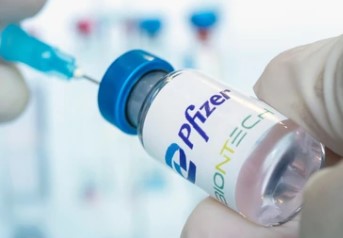
Valneva began collaborating with Pfizer in 2020, advancing VLA15 to Phase III two years later. However, progress faced hurdles: after near half the initial participants were removed due to site non-compliance, the companies extended anticipated regulatory filing from 2025 to 2026, doubling trial participants from an initial 6,000.
For Valneva, positive Valor research outcomes are crucial, as the company’s share price plummeted after setbacks in COVID and chikungunya vaccine developments. Analysts suggest that successful Lyme disease vaccine approval could unlock a market worth over $1 billion annually, with Valneva receiving up to $143 million in milestone payments and 14%-22% in royalties.
Company: Wave Life Sciences
Study: Phase Ib/IIa (NCT06405633)
Drug: RNA editing therapy WVE-006
Indication: α-1 Antitrypsin Deficiency (AATD)
RNA editing, considered safer and more flexible than DNA editing, has drawn attention in the emerging field of genetic medicine, with multiple companies investing in its potential. Later this year, key validation may come as Wave Life Sciences discloses findings in the rare disease α-1 antitrypsin deficiency (AATD).
Initial data from last year showed that two AATD patients, after a single dose treatment, produced the missing bodily protein with effects appearing within days and lasting around two months, without serious side effects. These results exceeded expectations, driving up the stock prices of Wave and peer companies. In the third quarter, Wave will reveal data from patients receiving multiple doses, influencing the entire RNA editing field.
Company: Biohaven Pharmaceuticals
Study: Phase II (NCT06419608)
Drug: Kv7.2/Kv7.3 activator BHV-7000
Indication: Major depressive disorder
After selling its migraine business for nearly $12 billion, Biohaven is seeking new business pillars, with a core focus on the year-end research results for major depressive disorder. Through a deal with Knopp Biosciences, Biohaven acquired BHV-7000, a drug targeting two potassium ion channels regulating neural activity and excitability in the nervous system.
Despite previous failures in bipolar disorder studies, Biohaven is advancing BHV-7000’s development in major depressive disorder and epilepsy, alongside another drug targeting different ion channels potentially for migraine treatment. Biohaven CEO Vlad Coric stated, "Ion channel therapies have the potential to change the treatment landscape for neuropsychiatric disorders." If the research succeeds, it would help Biohaven recover from pipeline setbacks and a more than 50% stock price drop this year.
Related Products & Services
- Cytokines for Organoid Culture
- ADC Target Protein
- PROTAC Targets
- Cell and Gene Therapy
- Targets of CAR-T Cell Therapy
- Cancer Drug Targets
- Immune Checkpoint Proteins
- Protein Engineering Services
- Protein Interaction Service
- Protein Expression and Purification Services
- Drug Discovery Screening
- Protein Pathway Profiling
